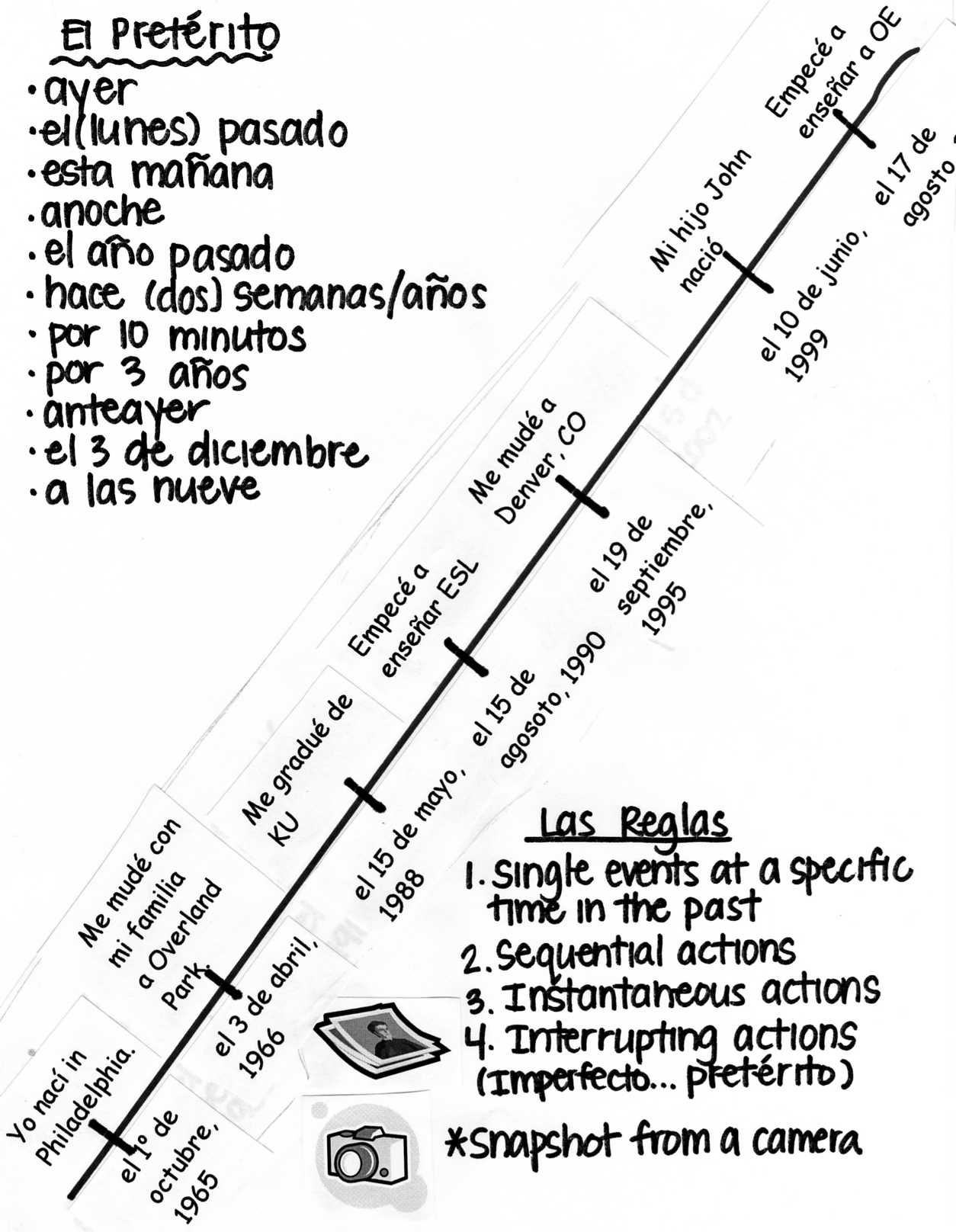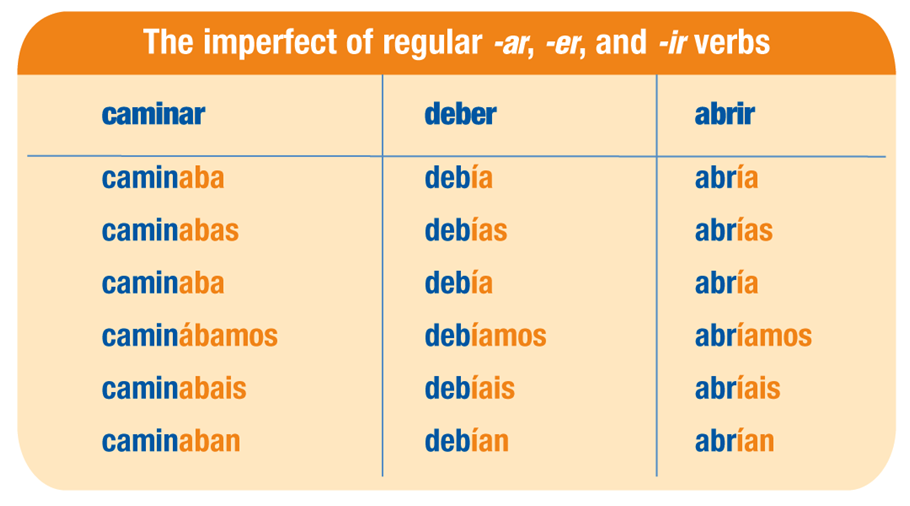estar means: to be
In this lesson we will see how to conjugate the verb estar in the Pretérito Imperfecto tense of the Indicativo mood. It means we will see step by step how to get the following conjugation:
| yo | estaba | I was |
| tú | estabas | you were |
| él/ella/usted | estaba | he/she/it was |
| nosotros/nosotras | estábamos | we were |
| vosotros/vosotras | estabais | you were |
| ellos/ellas/ustedes | estaban | they were |
This lesson is specifically about the estar conjugation. For an overview of Simple Tenses conjugation check the Simple Tenses Conjugation Chart.
We also have a Video Presentation on how to conjugate verbs in Pretérito Imperfecto. It’s embedded on the right, but using the above link you may find more detailed information on conjugation in this tense and explanation of exceptions and special cases.
How to translate Pretérito Imperfecto to English
Notice that the phrases in English in the third column of the above conjugation table are not direct translations from Spanish to English. They are usually the closest general equivalents. The example differences are:- In Spanish, there is the form usted in the third person singular. But this person does not translate to the English third person singular. It translates to the so called formal you and uses the inflected form which is most often represented as he/she/it in English conjugation charts.
- Similar situation happens in the third person plural, where ustedes translates to the English plural formal you but uses the form which corresponds to the they form in English.
- Tenses are used differently in Spanish and English, so the actual translation should always take into account the context and focus on translating the meaning, not just words.
- In both languages each verb may have multiple meanings and not every meaning translates directly to the other language. Here also, the context and focusing on the particular meaning helps to create the most accurate translation.
Note the timeline
The ability to correctly locate the intended position on the timeline is a crucial skill for the right use of tenses. So note the timeline in our lessons and visualize it while listening, speaking, reading or writing. After a bit practice you’ll be able to select the right tense to use much easier.
Step by step instructions
| Pretérito Imperfecto belongs to the simple tenses group, which means that all of the conjugated forms are one word long. There are also compound (compuesto) tenses in Spanish language, where each inflected verb form consists of two words. The verb estar has an almost completely regular conjugation in the Pretérito Imperfecto tense of the Indicativo mood. An exception is the first person singular, which has an irregular form. It means that the other persons simply follow the general rules for this conjugation group (-ar) without further exceptions. |
| The basis for the conjugation in this tense is the stem of the verb, so we begin by splitting the infinitive into a stem and an ending. It’s very easy to do. Just remove two letters from the end of the infinitive form to get the ending — one of -ar, -er or -ir. What’s left is the stem. So for our verb:
|
| Use the stem est- in each subject as the basis for conjugation, the common prefix that each of the forms begins with. |
 | Next, add to this regular stem the endings specific to each person. Check out the image showing all the endings. Note both the colors and shapes of the letters. It should help you find patterns and make it easier to remember these endings. Each grammatical person has a specific ending in each of the three conjugation groups -ar, -er, -ir. |
Add the regular ending -aba for the first person singular to create estaba:
|
And again add the regular ending -abas for the second person singular to create estabas:
|
And similarly add the regular ending -aba for the third person singular to create estaba:
|
| And add the regular ending -ábamos for the first person plural to create estábamos. |
| Note difference in spelling Only the first person plural has an accent here. This difference exists only in case of the verbs from the -ar group. Other groups always have an accented i in the ending in this tense. So add the accent to get estábamos:
|
Similarly add the regular ending -abais for the second person plural to create estabais:
|
And as before add the regular ending -aban for the third person plural to create estaban:
|
¡Ya está! The conjugation is now complete. But don’t end your session yet – it is very important to repeat and practice the material in order to retain it. Check below for and some links.
Example sentences
- ¿Dónde estaba tu gato en ese momento?
- Estaría en casa, pero no lo sé.
- Estaría en casa, pero no lo sé.
- Where was your cat at that moment?
- It was probably at home, but I don't know.
- It was probably at home, but I don't know.
Manuela siempre estaba interesada en aprender otros idiomas.
Manuela was always interested in learning other languages.
Al principio estaba aburrida pero en poco tiempo encontré muchas cosas para hacer.
Initially I was bored but in no time I found many things to do.
Otra vez lo confirmo para los que lo oyeron pero no estaban seguros.
I confirm it again for those who heard it but were not sure.
¿Crees que sabía que su hermano estaba en Madrid?
Do you think he knew that his brother was in Madrid?
Ella estaba condenada al infierno en la tierra.
She was condemned to hell on earth.
Decidieron volver a casa porque estaban cansados de esta situación.
They decided to go back home because they were tired of this situation.
El presidente se dirigió a los presentes que lo estaban esperando.
The president addressed all the present who were waiting on him.
Los documentos muestran que estaba enfermo y murió de causas naturales.
The documents show that he was sickly and died of natural causes.
No me estaba sintiendo muy bien, así que les pedí que se marcharan.
I wasn't feeling too good, so I asked them to leave.
Next Steps
- To practice this conjugation and test your skills try this Conjugation Exercise or the Memory Game
- For exercises and examples related to estar visit our Exercise section
- To see conjugation charts in all tenses for estar visit the Conjugator
- To explore other learning materials visit the Study section





